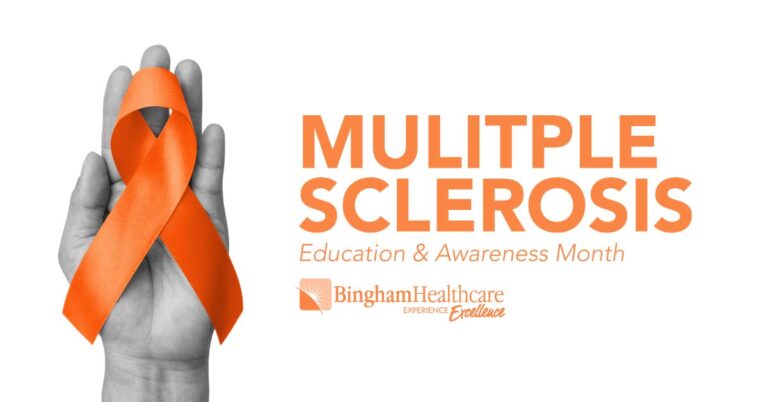
Advances in Knee Surgeries and Procedures
We start out crawling on them. Scuff them with scrapes and cover them in grass stains as kids. Then we spend decades bending, kneeling, running, squatting, and twisting. From scrubbing floors to proposing marriage to plain-old getting old, our knees take a beating, and it’s no wonder that sometimes they suffer.
From degenerative diseases to sports injuries, damaged knees are getting help from surgical advances. In the past decade, the knee has benefited from advances in technology and techniques. Here are three surgical procedures offered by the orthopedic surgeons at Bingham Healthcare Orthopedics & Sports Medicine that are helping patients get back on their feet faster.
MINIMALLY INVASIVE KNEE REPLACEMENT
When the surfaces of the knee joint wear out from arthritis, injury, or general wear and tear, the grinding of bone on bone causes pain, swelling, and difficulty with simple tasks like going up or down stairs. In this procedure, the damaged bone and cartilage are removed and replaced with metal and plastic prosthetics.
WHY IS IT BETTER TODAY THAN 10 YEARS AGO?
Materials technology has changed our success rates. We’re now able to better replicate the normal rotation of the knee. The way it was done before did not take a single flexion axis of rotation into account; this caused instability while the knee was flexing and caused materials to wear out faster.
Surgeons use more precise instruments to cut bone and place implants. This can help the knee replacement last longer.
WHAT’S SO GREAT ABOUT IT?
Because of minimal tissue damage and a smaller incision, patients typically go home faster, recover more quickly, and get back to normal activity sooner. But it’s not just making a small incision. It’s about respecting the tissue. If you’re gentle and respect the tissue in the knee, patients will heal faster and feel better sooner.
MENISCAL REPAIR
Weekend warriors and others who twist, tweak, or somehow injure their knees often experience a tear in the meniscus, the knee’s shock absorber. A rip of this moon-shaped piece of cartilage can cause pain, swelling, instability, and locking.
WHY IS IT BETTER TODAY THAN 10 YEARS AGO?
Just 10 to 15 years ago, surgeons would take out the whole meniscus. Without that cushion, the patient was almost guaranteed to develop osteoarthritis of the knee in less than a decade. Today, however, a torn meniscus can be repaired arthroscopically, a technique that requires only a buttonhole-sized incision, to completely restore those shock absorbers.
WHAT’S SO GREAT ABOUT IT?
Meniscal repair allows you to keep that cushion and protect your joint, which is particularly beneficial if you’re younger than 55. If you go in and take out the ripped piece of cartilage, you can get the athlete back to their sport faster. But long term, patients benefit from saving the meniscus.
ANTERIOR CRUCIATE LIGAMENT (ACL) RECONSTRUCTION
The ACL is one of four main ligaments in your knee. Its main job is to prevent the tibia from sliding in front of the femur, but it also provides stability for your knee as it rotates. That’s why ACL injuries are common among soccer players and skiers. In the surgery, the ACL is replaced with a tendon.
WHY IS IT BETTER TODAY THAN 10 YEARS AGO?
ACL reconstruction used to be a two-plus-hour surgery and the patient spent four days in the hospital with the knee immobilized.
Today, the surgery is typically done arthroscopically, meaning patients usually go home the same day. A newer procedure called a double-bundle graft is more closely replicating the original anatomy of the knee.
WHAT’S SO GREAT ABOUT IT?
In the past, an ACL injury could signal the end of competitive sports-or any sports for that matter. But these new techniques can help restore strength and stability. With proper rehabilitation many athletes can return to normal activities.
THE MAKO ROBOTIC-ARM ASSISTED SYSTEM
Many of Bingham’s orthopedic surgeons are also trained on and use the Mako system to perform surgical procedures on the knees and hips. Research has shown the Mako system to be the most accurate, most reproducible, and safest way to perform a variety of surgeries. Mako robotic-arm assisted hip and knee surgery has been a game-changer, dramatically changing the way joint replacement procedures are performed, by providing each patient with a personalized surgical experience based on their specific diagnosis and anatomy.
EASTERN IDAHO’S LARGEST AND MOST EXPERIENCED ORTHOPEDIC TEAM
Bingham Healthcare Orthopedics & Sports Medicine was created to offer a complete approach to orthopedic and sports medicine care throughout Eastern Idaho. Bingham’s world-class physicians are second to none, and offer exceptional service, advanced medical procedures, and a patient-centered philosophy of care.
When left untreated, arthritis and joint pain in the knee, hip, shoulder, elbow, hand, wrist, foot, or ankle, can often cause other areas of your body to over-compensate. You no longer have to suffer from pain that’s progressively getting worse. With offices in Idaho Falls, Blackfoot, Pocatello, and Soda Springs, Bingham’s extremely talented orthopedic team offers comprehensive and convenient orthopedic care to patients of all ages throughout East Idaho.
To schedule a consultation to discuss your unique joint pain with a Bingham orthopedic surgeon, please call (208) 785-4100 to find one near you that specializes in what you’re looking for. To learn more about each of our orthopedic specialists, visit: www.BinghamMemorial.org/Orthopedics
Our content is reviewed regularly and is updated when new and relevant evidence is made available. This information is neither intended nor implied to be a substitute for professional medical advice. Always seek the advice of your physician or other qualified health provider prior to starting any new treatment or with questions regarding a medical condition.
Return to Articles


